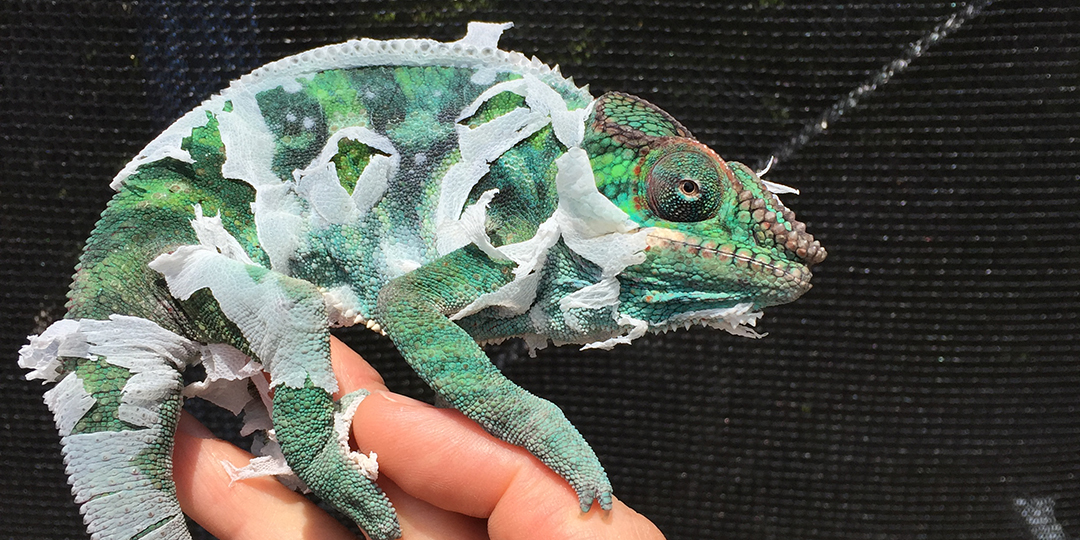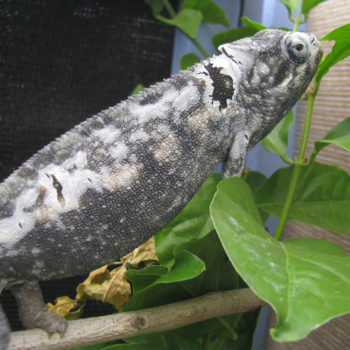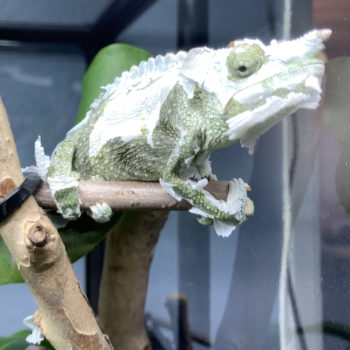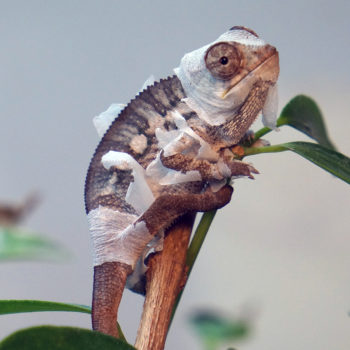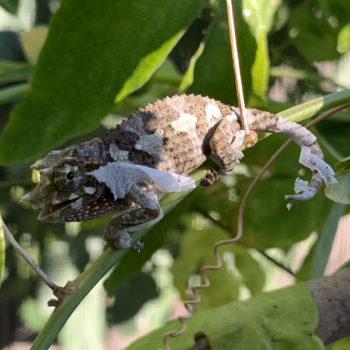Shedding
Description
When chameleons grow they shed their skin. The first time this happens it truly looks like your chameleon has come down with a horrible mummy disease. To shed, the entire skin surface is separated from the new skin underneath by a fluid which evaporates and leaves the old skin to crack off and blow away (or be rubbed off). The nature of chameleons shedding means that it is important not to increase humidity as many advise. Increasing humidity will make it more difficult to shed because the chameleon relies on the evaporation to help the skin disengage.
A healthy shed can take a couple hours. The chameleons will suddenly “explode” in white shreds. An unhealthy shed, on the other hand can take days as pieces slowly fall off and some pieces left stuck on.
During the shed the chameleon may rub his body against sticks and gape dramatically to loosen the skin. He may also try to pull pieces off with his feet. At the end of it all, your chameleon will have a new, brightly colored skin and you will have a pile of white shed skin at the bottom of the cage (or strewn about in the leaves).
Symptoms
Before the peeling of the skin, a shedding can be identified by your chameleon seeming to get cloudy. The colors will be muted. This is the start of the skin separating from the body. The shedding skin will soon break in places and start the peeling off.
Treatment
Shedding is a normal and healthy process and, usually, happens without any intervention. In the case where there is stuck shed that will not come off, a moistened Q-Tip can be used to gently rub the retained shed off. Stuck shed is not usually a problem, but it can become a medical issue if infection gets under the dead skin. Stuck shed between the toes has been an issue and is a common place for trouble to start.
Husbandry Correction
Husbandry correction is necessary only if the shed would not come off on its own. This could be a sign of the humidity being too high. A healthy humidity cycle is high humidity at night and lower humidity during the day. With this cycle a chameleon can start their shed in the morning and be completed by the afternoon.

